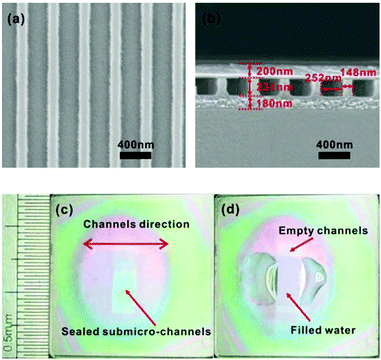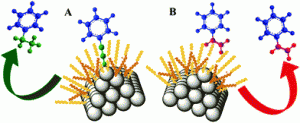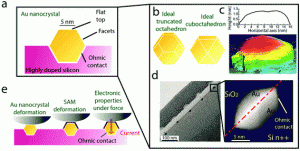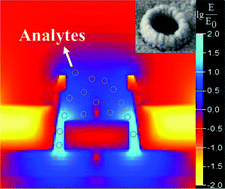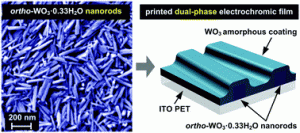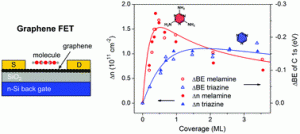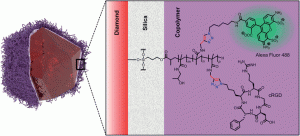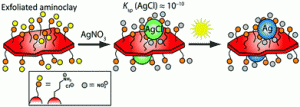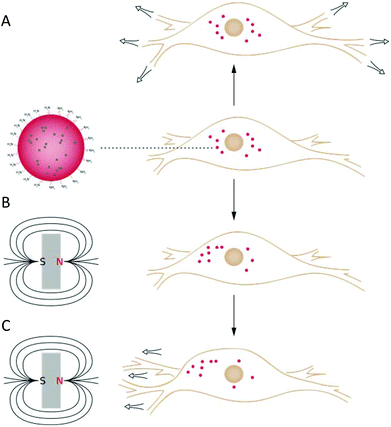
Schematic representation depicting the ability for an external magnetic field to attract magnetic nanoparticles which have been internalised within cells. For details please view the full article.
Superparamagnetic nanoparticles are widely used for non-invasive imaging techniques such as magnetic resonance imaging (MRI) due to their ability to only become magnetised under the influence of an external magnetic field. In this article, it is demonstrated that labelling cells with magnetite nanoparticles can allow for manipulation of both direction and speed of the migration of cells using an external magnet. Bespoke nanoparticles were synthesised with a positive charge to induce internalisation into two different cell lines that are important for wound repair. Placing labelled cells under the influence of an external magnetic field resulted in 2D migration of cells towards the magnet, whereas non-labelled cells (in a magnetic field) and labelled cells with no magnetic showed no directional movement. The migration could be monitored by bright field and fluorescent microscopy as the nanoparticles contained a fluorescent tag. The possibility of controlling cell mobility is suggested to have importance in not only cell therapies, but also tissue engineering and cell tracking. This tailored synthesis approach could also allow tracking of cells in vivo using a bi-modal imaging approach of dual MRI and whole animal fluorescence.
Manipulating Directional Cell Motility Using Intracellular Superparamagnetic Nanoparticles
Michael Bradshaw, Tristan Clemons, Diwei Ho, Lucia Gutierrez, Francisco Lazaro, Michael House, Timothy Guy St Pierre, Mark Fear, Fiona Wood and Swaminathan Iyer
Nanoscale, 2015, Advance Article. DOI: 10.1039/C4NR06594H
Dr Mike Barrow is a guest web writer for the Nanoscale blog. He currently works as a Postdoctoral Researcher at the University of Liverpool.











